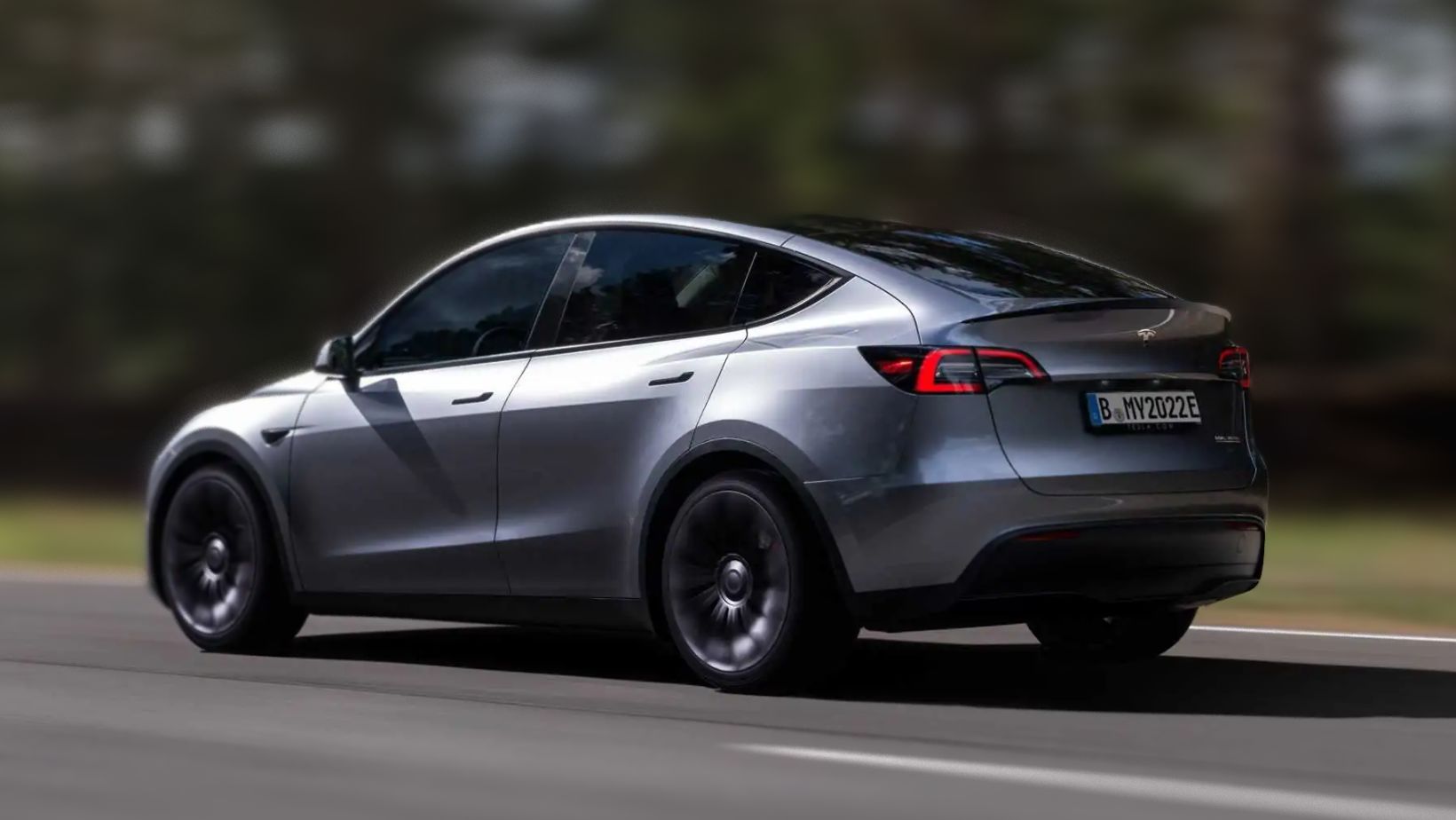Explore the future of autonomous vehicles through innovative technologies, government regulations, AI’s role, safety challenges, and environmental benefits in this insightful post.Welcome to the exciting world of autonomous vehicles, where innovation meets the open road. As cutting-edge technology transforms the automotive industry, self-driving cars are not just a futuristic concept; they are quickly becoming a reality. In this article, we will explore the innovative technologies driving this evolution, the role of government regulations in shaping development, and the growing acceptance among consumers. Additionally, we will delve into the critical functions of AI, safety enhancements, potential challenges, and the environmental benefits that these vehicles promise. Join us as we navigate the landscape of autonomous vehicles and uncover what you need to know about this groundbreaking shift in transportation.
Innovative Technologies Driving The Future of Autonomous Vehicles
The future of autonomous vehicles is being shaped by a variety of innovative technologies that enhance their capabilities and performance. Here are some key technologies driving this transformation:
- LiDAR Technology: Light Detection and Ranging (LiDAR) is crucial for precise mapping and environment detection. It uses laser light to create a detailed 3D map of the vehicle’s surroundings, enabling safe navigation.
- Computer Vision: This technology involves the use of cameras and algorithms to interpret visual information from the vehicle’s environment. It ensures that autonomous vehicles can recognize objects, traffic signals, and pedestrians accurately.
- Machine Learning: Machine learning algorithms allow vehicles to learn from data and improve their performance over time. This technology helps in decision-making processes, allowing cars to adapt to various driving conditions and environments.
- Vehicle-to-Everything (V2X) Communication: This technology enables vehicles to communicate with each other and with infrastructure elements, such as traffic lights and road signs. V2X communication enhances safety by providing real-time information about road conditions and potential hazards.
- Advanced Sensor Fusion: Combining data from multiple sensors (radar, cameras, LiDAR) improves the vehicle’s perception of its environment. This sensor fusion is essential for creating a comprehensive understanding of surroundings, leading to better navigation decisions.
As these technologies continue to evolve, they will play a pivotal role in realizing the full potential of the future of autonomous vehicles, making them safer, more efficient, and better integrated into everyday life.
Government Regulations Shaping Autonomous Vehicle Development
As the future of autonomous vehicles unfolds, government regulations play a crucial role in shaping the landscape of this innovative technology. These regulations are essential not only for ensuring public safety but also for fostering an environment conducive to growth and development within the industry. Various countries and regions are crafting specific legal frameworks that address the complexities surrounding autonomous vehicles.
Here are some key elements of government regulations impacting autonomous vehicle development:
| Region | Regulatory Approach | Key Regulations |
|---|---|---|
| United States | State-by-State Legislation | Self-Driving Car Bills, Safety Standards |
| Europe | EU-Wide Strategy | General Safety Regulation, GDPR Compliance |
| Asia (e.g., Japan, China) | National Guidelines | Road Safety Rules, Implementation Frameworks |
These regulations vary significantly across different jurisdictions, leading to a patchwork of rules that manufacturers must navigate. Currently, key areas of focus include:
- Standards for Testing and Deployment: Regulations specify how autonomous vehicles should be tested before they can be deployed on public roads.
- Liability and Insurance Frameworks: Defining who is responsible in the event of an accident involving an autonomous vehicle is a significant regulatory concern.
- Data Privacy and Security: With vehicles collecting vast amounts of data, regulations are needed to protect user privacy and secure data against breaches.
Furthermore, ongoing dialogues between government agencies and industry stakeholders are crucial for adapting regulations to keep pace with technological advancements. As the future of autonomous vehicles continues to evolve, proactive regulation will help facilitate their safe integration into existing transportation systems, ensuring both public confidence and market growth.
Consumer Acceptance and Its Impact on Autonomous Vehicles
As we look towards the future of autonomous vehicles, understanding consumer acceptance is crucial. Public perception can significantly influence the rate at which autonomous technology is adopted. People’s experiences, fears, and trust levels regarding self-driving cars will dictate their willingness to engage with this revolutionary mode of transportation.
Surveys and studies indicate varying levels of optimism and skepticism among consumers about fully autonomous vehicles. Key factors that affect acceptance include:
| Factor | Impact on Acceptance |
|---|---|
| Safety Concerns | High; fears of accidents and malfunctions lead to hesitance. |
| Technological Familiarity | Moderate; greater exposure to existing technologies fosters comfort. |
| Cost of Ownership | High; affordability plays a significant role in consumer decisions. |
| Legal and Insurance Issues | Moderate; clarity on regulations influences consumer trust. |
| Environmental Impact | Low; eco-conscious consumers may more readily adopt EVs. |
As the industry progresses, stakeholders must educate consumers about the future of autonomous vehicles, addressing safety and regulatory concerns. Empirical data and real-world testing can help bridge the knowledge gap, potentially increasing acceptance levels over time.
The path toward widespread adoption of autonomous vehicles hinges not only on innovation and technological advancements but also on fostering a public sentiment that embraces these changes. How consumers adapt and respond will play an essential role in shaping the future of autonomous vehicles.
The Role of AI in The Future of Autonomous Vehicles
Artificial Intelligence (AI) is at the heart of the future of autonomous vehicles, driving a transformation that promises to revolutionize how we think about transportation. By leveraging advanced algorithms and machine learning techniques, AI enables vehicles to process vast amounts of data in real time, enhancing their ability to make informed decisions on the road.
One of the primary functions of AI in autonomous vehicles is perception. This involves interpreting information from various sensors, such as cameras, LIDAR, and radar, to create a comprehensive understanding of the vehicle’s surroundings. AI algorithms can identify obstacles, pedestrians, and road conditions, allowing the vehicle to navigate safely through complex environments.
Another critical aspect is decision-making. AI systems utilize predictive analytics to evaluate potential scenarios based on the data collected, assessing the safest and most efficient response to a given situation. For instance, in a scenario where a pedestrian suddenly crosses the street, the AI can rapidly calculate the best course of action, whether to brake, swerve, or continue safely.
Moreover, the integration of AI in autonomous vehicles extends to improving user experience. AI can personalize driving settings, enhance entertainment options, and even offer real-time traffic updates, thereby creating a more comfortable journey for passengers. This technology is continuously evolving, with companies investing heavily in research and development to improve the capabilities of AI systems.
Below is a table summarizing the key roles of AI in the future of autonomous vehicles:
| AI Function | Description |
|---|---|
| Perception | Enables vehicles to understand their surroundings using data from sensors. |
| Decision-making | Evaluates potential scenarios and determines the best response. |
| User Experience | Personalizes settings and enhances in-vehicle entertainment and information. |
As the technology matures, the implications of AI for the future of autonomous vehicles will be profound, impacting everything from manufacturing to regulatory frameworks. Stakeholders, including manufacturers, policymakers, and consumers, must stay informed about these developments to better understand the evolving landscape of transportation.
Safety Enhancements and Challenges for Autonomous Vehicles
The future of autonomous vehicles hinges on achieving high safety standards, given that safety is a primary concern for consumers, manufacturers, and regulators alike. With the rapid evolution of technology, several safety enhancements are being implemented to minimize risks associated with autonomous driving. However, this progress is accompanied by its own set of challenges.
| Safety Enhancements | Challenges |
|---|---|
| Advanced Sensor Technology | Hardware Reliability |
| Machine Learning Algorithms | Data Security Concerns |
| V2X (Vehicle-to-Everything) Communication | Integration with Legacy Systems |
| Redundant Systems for Critical Components | Regulatory Compliance and Variability |
One of the most significant advancements in safety is the implementation of advanced sensor technology, such as LIDAR, radar, and cameras, which provide comprehensive situational awareness. These sensors help the vehicle identify obstacles, predict potential hazards, and react accordingly. Additionally, machine learning algorithms are being refined to improve decision-making processes, allowing autonomous vehicles to learn and adapt to various driving scenarios.
However, these enhancements are not without their challenges. Hardware reliability remains a crucial concern; any malfunction in a safety-critical system could lead to catastrophic consequences. Furthermore, as data security threats continue to evolve, autonomous vehicles must ensure that they are protected from cyber-attacks that could compromise their operational integrity.
Another exciting development is the introduction of V2X communication, enabling vehicles to communicate with each other and with infrastructure. This technology promises to enhance overall traffic flow and safety. Nonetheless, there are obstacles to overcome, particularly regarding the integration of these systems with existing vehicles and technologies.
While the future of autonomous vehicles appears promising with numerous safety enhancements being implemented, it is equally clear that various challenges must be navigated to ensure that these vehicles can operate safely and efficiently on our roads.
Environmental Benefits and Sustainability of Autonomous Vehicles
The future of autonomous vehicles promises significant environmental benefits, primarily through reductions in emissions and improvements in energy efficiency. As these vehicles increasingly adopt electric options and advanced driving capabilities, their potential to mitigate environmental impact becomes clearer.
One of the most substantial advantages is the reduction in greenhouse gas emissions. Autonomous vehicles can be programmed to optimize driving patterns, reducing idling time and enhancing fuel efficiency. This is particularly beneficial in urban areas where traffic congestion often leads to increased emissions.
Additionally, as the technology evolves, the integration of renewable energy sources will become more feasible. Autonomous vehicles can rely on solar or wind power, further decreasing reliance on fossil fuels. Many manufacturers are already investing in infrastructure to support charging stations powered by renewable energy, contributing to a sustainable energy cycle.
Another aspect to consider is the potential for shared autonomous vehicle systems. By facilitating car-sharing and ride-sharing services, the total number of vehicles on the road could be significantly reduced. This would alleviate traffic congestion and lower overall emissions, leading to cleaner air and a smaller carbon footprint.
The design and manufacturing processes for autonomous vehicles are becoming increasingly focused on sustainability. Automakers are exploring the use of recycled materials and eco-friendly production techniques to minimize their overall environmental impact. As consumer awareness grows, companies are likely to prioritize sustainability as a core value in their operations.
The future of autonomous vehicles is not only about technology and convenience but also about creating a more sustainable and environmentally friendly transportation system. By harnessing innovative technologies, optimizing energy use, and promoting shared mobility, autonomous vehicles have the potential to significantly reduce their ecological footprint while enhancing urban living conditions.
Frequently Asked Questions
What are autonomous vehicles?
Autonomous vehicles, also known as self-driving cars, are vehicles equipped with technology that allows them to navigate and operate without human intervention.
What technologies enable autonomous vehicles to function?
Key technologies include sensors, cameras, radar, Lidar, machine learning algorithms, and artificial intelligence that work together to perceive the environment and make driving decisions.
How do autonomous vehicles impact road safety?
Proponents suggest that autonomous vehicles could significantly reduce accidents caused by human error, potentially leading to safer roadways through improved reaction times and consistent driving behavior.
What are the main challenges facing the adoption of autonomous vehicles?
Challenges include regulatory hurdles, public acceptance, technological reliability, cybersecurity risks, and the need for comprehensive infrastructure updates.
How will autonomous vehicles affect the job market?
The rise of autonomous vehicles may disrupt job markets for drivers, such as truck drivers and taxi operators, while simultaneously creating new jobs in technology development, maintenance, and regulation.
What role does public policy play in the future of autonomous vehicles?
Public policy will be key in establishing regulations, safety standards, and ethical guidelines for the testing and deployment of autonomous vehicles to ensure public trust and safety.
What is the timeline for the widespread adoption of autonomous vehicles?
While predictions vary, many experts believe we could see significant adoption within the next decade, depending on technological advancements, regulatory pathways, and public acceptance.











